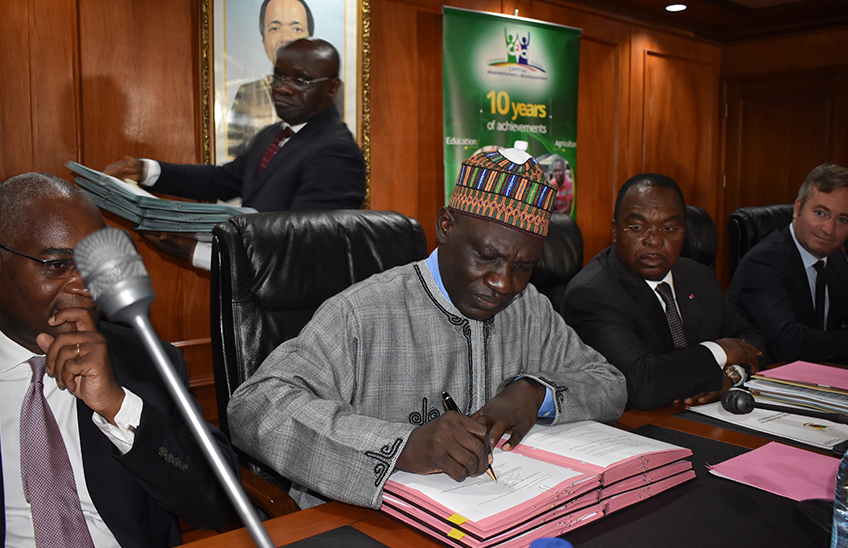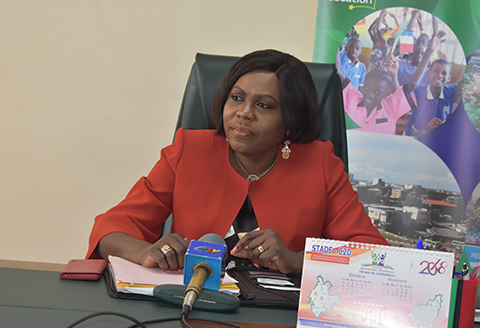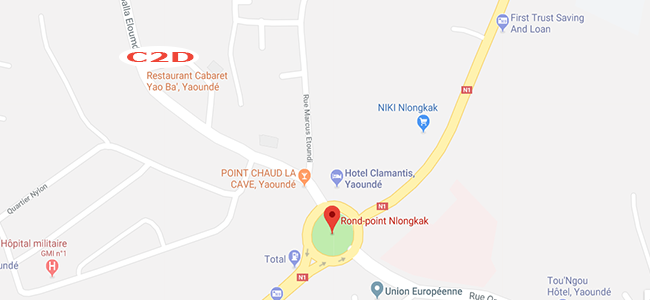
What is C2D all about?
The C2D was born from the Heavily Indebted Poor Countries initiative. It was launched following a proposal from France in 1996. In return Cameroon had to reach a "completion point", i.e. a series of objectives in terms of poverty reduction and macroeconomic stability. Eligible countries have seen a significant proportion of their external debt cancelled. In the case of Cameroon, the reaching of the completion point on 28 April 2006 resulted in the cancellation of 70% of its external debts.
In order to extend such dynamic beyond the completion point, France decided in 1999 to create the Debt Relief and Development Contracts. These contracts set by mutual agreement an amount of debts to be repaid by the beneficiary country to France. Each repayment is then returned directly to the country in the form of grants that can be mobilized to improve the living conditions of its populations. C2Ds are therefore efforts made by the creditor and debtor as a team in their fight against povertyCameroon was one of the first countries to benefit from this tool through the signing of the first C2D on 22 June 2006. To date, three Partnership Agreements have already been signed by both parties for a total amount of CFAF 967 billion.
Signed on 22 June 2006 for a total budget of €352.7 billion, the 1st C2D was an innovative instrument to test the new French bilateral aid management framework. The granting of allocations that are in line with the priorities of the Poverty Reduction Strategy Paper (PRSP) relate to the following focal sectors: (i) health and AIDS control, (ii) basic education, (iii) infrastructure, (iv) agriculture and food security and (v) environment and biodiversity. The first generation C2D, whose initial schedule was to cover the period from April 2006 to April 2011, has seen the signing of fifteen allocation agreements.
The signing of the second C2D, on 1 July 2011 for an amount of CFAF 214 billion, was part of this prospective consolidation approach focusing on the rural sector, urban development, vocational training and SMEAA. The delays in consumption observed in the implementation of the 1st C2D led the steering bodies to review the structure of the legal commitments of the 2nd Contract and to introduce Targeted Budget Support (TBS) as an element to regulate the pace of programme disbursements.

The 3rd and last C2D was signed on 30 June 2016 in Yaounde. More abundant than the two previous ones, the 3rd C2D has a substantial budget of 400 billion CFA francs and is also distinguished by its longer duration (10 years) and its structuring. It is composed of a so-called normal component estimated at 360 million euros (about 236 billion CFA francs) and an additional 240 million euros (about 162 billion CFA francs) repayment effort. Having entered into effect in 2016, it is expected to be completed in 2026.
As for the two previous ones, the 3rd C2D places the challenge of growth and job creation at the centre of its actions to curb poverty and is strictly in line with the priorities set by the Growth and Employment Strategy Paper (GESP) drawn up by the Cameroonian Government. It is in line with the guidelines given by the two heads of State at their meeting in Yaounde in July 2015 and is perfectly in line with President Paul Biya's ambition to make Cameroon an emerging country by 2035.
By committing themselves to this last Contract, known as the Maturity Contract, Cameroon and France have acknowledged the successes achieved in the implementation of the first two and have expressed their desire to capitalize on and sustain the results obtained.
The guiding principles of the 3rd C2D
In order to ensure its proper implementation in accordance with the exchanges between the two Governments, a set of principles have been set out:
1) The principle of maturity and sustainability, under which both parties ensure the sustainability and durability of the Programmes from the outset;
2) The principle of preferential attention to populations, and in particular to young people, in vulnerable regions of Cameroon, according to which both parties seek to maximize the impact of the Programmes in the most fragile regions of Cameroon;
3) The desire to alleviate the impact of early repayments on the Cameroonian State's cash position; a principle that has led the parties to agree to provide an amount of budget support, the modalities and points of application of which will be defined in the specific agreements and taken into account in the C2D allocations;
4) The modalities for the use of budget support as well as the allocations that should allow a flexible and rapid use of funds for essential expenses included in the State budget in order not to weigh on budgetary balancesOrganization chart of C2D Cameroon
Strategic Orientation Committee (COS-C2D)




Partie Camerounaise: MINFI, MINEPAT,AN,Ministère sectoriels ,SC

Partie Française : Ambassade de France , SCAC, AFD, PTF, SC, PF ////////
Bilateral Technical Committee


Partie Camerounaise: SGPR, SGPM, MINFI, MINEPAT , CAA , SC .

Partie Française : Ambassade de France , SCAC, AFD /////////////////////
Technical Support Secretariat Dedicated to the Execution of C2D (STADE -C2D)


Sécrétariat : COS - C2D et CTB - C2D //////////////////////////////////

Coordination des programmes sectoriels //////////////////////////////////////
VISIT OUR HEAD OFFICE

Contact us







